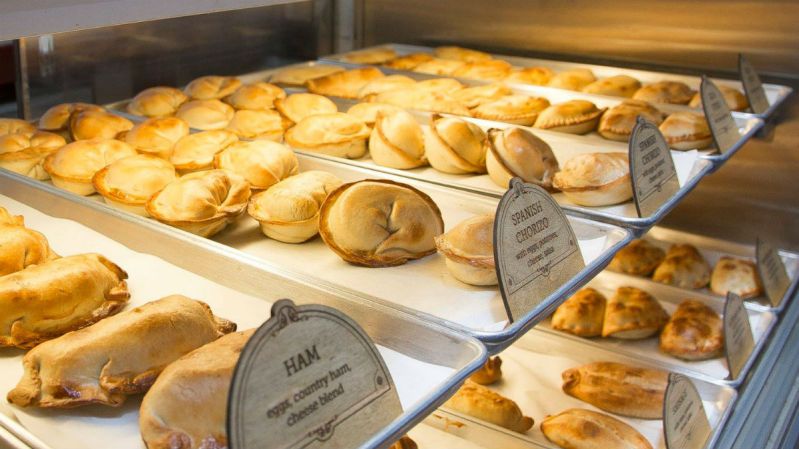
Don’t be the guy who “only knows how to cook pasta.” That’s a great start, but frankly, it’s not going to be enough. If you need a new dish to add to your repertoire, you should consider the empanada. Why? Because empanadas are not only easy to make, but they taste heavenly, require no silverware or plates, and serve as a bonding activity to do with a date, friends, family, or all of the above.

For the best beginner recipe, The Manual turned to Lorena Cantarovici, founder and head chef at Maria Empanada in Denver, who has been called the ambassador of the Argentinian empanada in America. Her recipes earned her recognition as one of Zagat’s “Hottest New Bakeries” and one of Nation’s Restaurant News’ “Breakout Brands” of 2018, not to mention the Flavortown seal of approval from Guy Fieri himself.
Cantarovici welcomed us into her kitchen with a glass of South American yerba mate and explained, “Everyone should know how to make empanadas because it creates unity. It’s a way of bringing people together and making memories, while the process is like a game or craft.”
While Cantarovici makes roughly 11 different fillings at Maria Empanada, she taught us the recipe of her signature Caprese empanada, which takes less than five ingredients to make.
Caprese Empanada

Ingredients:
- Phyllo or empanada dough
- Mozzarella
- Tomatoes
- Basil
- Pepper for taste
Method:
1. Go either to your local international grocer or a traditional grocery store and get empanada dough or phyllo dough. In the case of phyllo dough, “use a rolling pin to thin out the dough and cut into a round disk,” Cantarovici says. Thickness-wise, think of a hearty slice of breakfast ham.
2. Put to the side. Fill a small bowl of water and also put to the side.
3. “Cut the mozzarella into small but not shredded pieces, and the same with the basil. Cut tomatoes into small cubes and mix these ingredients together in a bowl, adding pepper and salt depending on the saltiness of the cheese,” Cantarovici says.
4. Preheat the oven to 400 degrees Fahrenheit.
5. If you live in a humid climate, dust your surface with flour. High-altitude bakers, add only a sprinkling so as to not dry out the dough.

6. Take your first disc of dough and, using your hands, run water on one half of the edge. Add two spoonfuls of Caprese filling to the middle and fold the dough to create a half moon. Press hard on the ends (the water helps seal this dough together).
7. Now for the repulgue. Pronounced “rra-pull-gay,” repulgue is the unique twist or fold that characterizes each empanada. Fun fact: The way in which the dough is folded is intentional depending on the filling. This is one telltale sign of an artisanal, hand-made empanada, as the use of mass machine-made empanadas yields only one fold on the edge. For the Caprese empanda, press the border closed to seal the filling, then pull up that border until it touches the center. Then make pinches to the side. The job of the repulgue is usually assigned in a family setting to the children, who can play with the dough while the grown-ups continue chopping vegetables and meats. So give the task to your most Gronk-like friend.
8. Lightly drizzle oil on a baking sheet and position your empanada on the top. Add a quick egg wash to make it shine and put into the oven for 15-20 minutes until the dough has turned golden.
9. Once you’re done, let them rest for 10 minutes.
10. Put all your empanadas in a big basket or tray, pour you and your guest a glass of wine or sangria, and eat with your hands and a napkin.
Should you use a knife or fork? Cantarovici says, “No, no, no, no, no. You do not eat with a fork. It was intended to eat with your hands and you can probably even walk with one.”
“Empanadas came from Spain and were authentically made with a sheet pan, then cut into pieces. After that, it started to appear in its smaller size and that size came to Argentina. But every country does it differently. In Mexico, empanadas are a sweet dessert and in Uruguay, they’re all made with potatoes. The Finnish, for instance, similarly have pasties,” Cantarovici says, “but they’re made to be cooked and enjoyed with someone you want to spend time with.” [Finnish pasties, though, differ in that they were historically made with a rye crust and stuffed with barley or talkunna.]
Major date points with a crush or a best-son ranking with parents.


